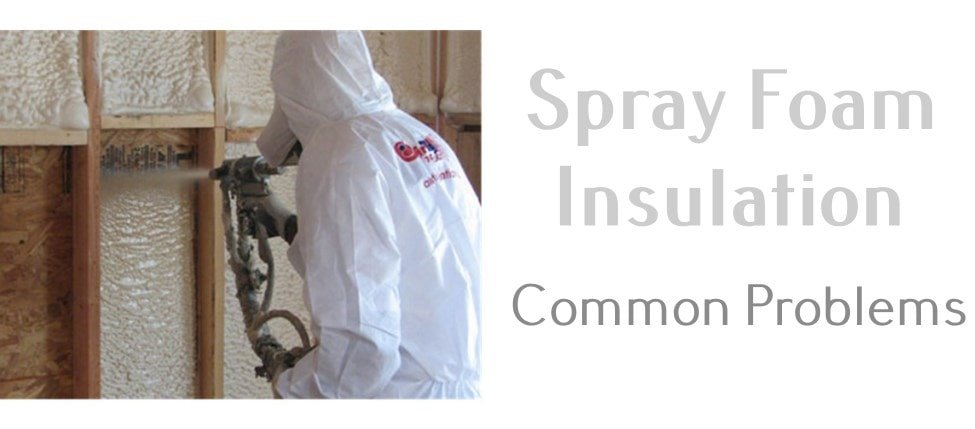Spray foam is a pressurized liquid mixture of isocyanate and polyol resin. It sticks to a surface and then expands to 60 times its original size when sprayed on it. As a result, your home has a waterproof and airtight barrier that prevents water from entering and warm air from escaping.
Spray foam can be utilized in various ways around the house, but it’s most typically applied as a roof insulation product. However, many housebuilders are concerned about the potential spray foam insulation roof problems that may occur during the application.
Problems with Spray Foam Roof Insulation
| Issue | Solution | Additional Tips |
|---|---|---|
| Incorrect mixture | Use an infrared camera or spot check | Check mixture ratio |
| Inconsistent thickness | Use an infrared camera or spot-check | Ensure even application |
| Improper ventilation | Provide ventilation options | Use breathable spray foam |
| Misapplication locations | Use plywood borders | Avoid closed cavities and electrical hazards |
| Water infiltration | Regular roof maintenance | Use breathable spray foam |
- Incorrect Mixture
Because the components are mixed incorrectly within the right temperature range or ratio of the mixture, the foam will eventually crumble and loosen up within a short time. Spray foam insulation is designed to survive for over thirty years; consequently, any foam that fails before that time is likely due to an erroneous material mix.
How to solve: make sure you get the right mixture before you start applying.
During a recent renovation project, I encountered an issue with spray foam insulation crumbling after only a few months. It turned out the mixture ratio was off due to cold temperatures during application. Ensuring the mixture was correct and applied within the optimal temperature range resolved the issue.
- Inconsistent thickness
Spray foam insulation must be applied at an even thickness to be effective and maintain a consistent R-value (resistance to heat). If not even, conduction can occur, causing the spray foam to fail.
An expert noted, ‘Using an infrared camera to detect areas of unequal thickness or spot checking with a marked stick can ensure a consistent application, which is crucial for the insulation’s effectiveness.

- Improper ventilation could lead to condensation
You can create a completely waterproof and airtight solution with spray foam insulation, which can cause warm air to become trapped in the chamber. As a result, this could lead to condensation.
How to solve: Having ventilation options such as a window or simply vents is critical. Pick a more breathable spray foam, such as open-celled spray foam, can also be used to allow warm air to escape.
“In my experience, using open-cell spray foam in areas prone to condensation has been effective. Proper ventilation combined with the right type of foam prevented moisture build-up and related issues.”
- Lack of understanding of where not to use spray foam insulation
Spray foam insulation is a very versatile product. It can spread fast and conform to the space. Therefore, there are some places where spray foam insulation should not be used, such as spaces with a closed cavity, near an electrical box, or a light ceiling box.
How to solve: make a border using plywood within a certain area to prevent it spreading.
While working on an attic project, I realized the importance of avoiding closed cavities. Using plywood borders helped contain the foam, preventing potential electrical hazards and ensuring a safe application.
- Water infiltration leads to rotten wood
If the roof is broken from the outside, allowing water to enter the area between the spray foam and the slates’ underside, water will infiltrate the roof, and not being able to exit through the spray foam is one of the main concerns house surveyors raise.
This can cause condensation due to the temperature difference between this region and the remainder of the loft room. Condensation can saturate wood trusses and rafters, resulting in deterioration.
How to solve: The easiest approach to avoid this spray foam insulation roof problems is to keep your roof in good shape and use a breathable spray foam product.


